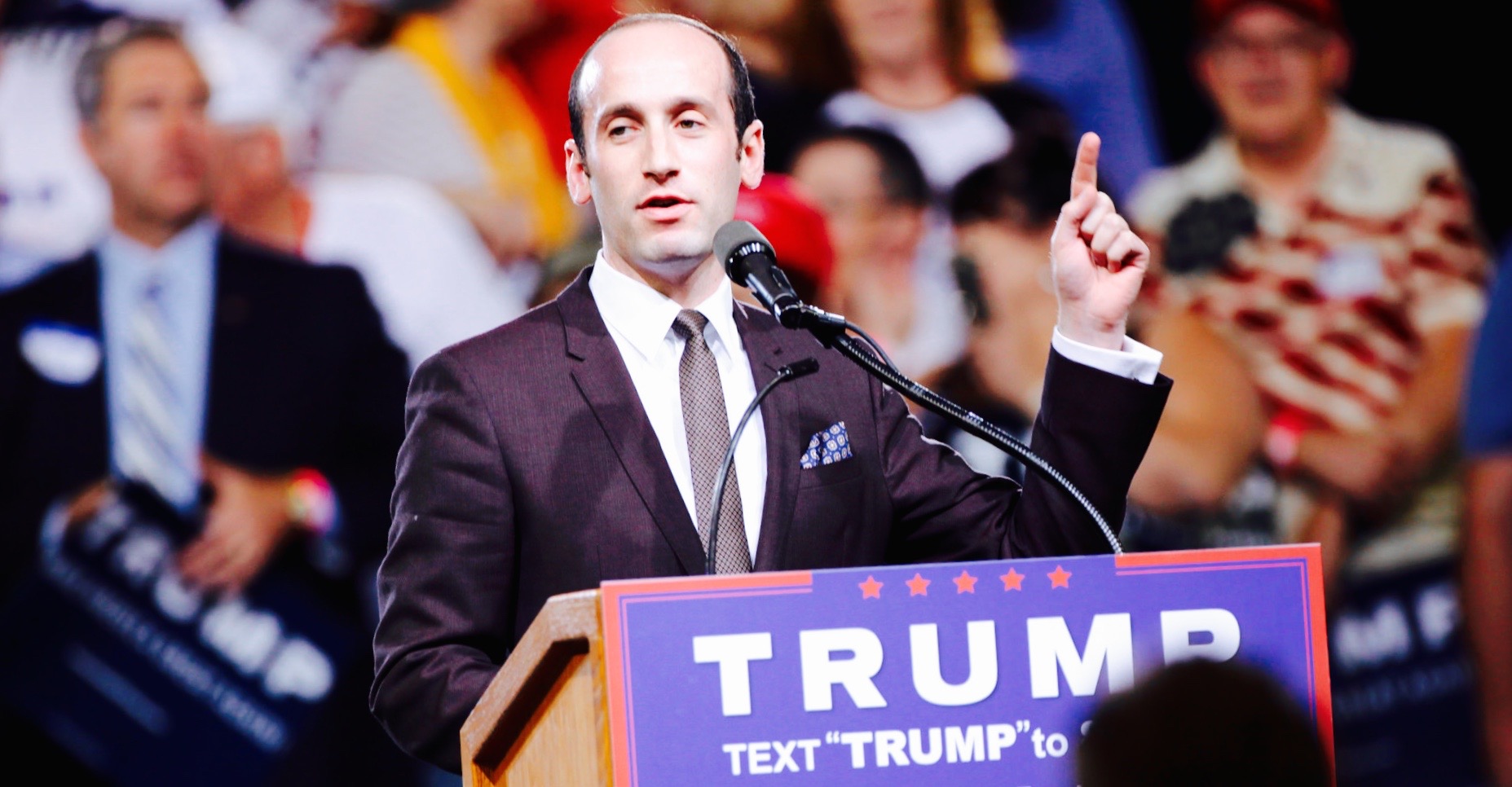One of the most remarked-upon moments in President Donald Trump’s inauguration speech was his description of the United States as a post-apocalyptic hellscape. He likened “rusted out factories” to “tombstones,” and referenced “the crime and the gangs and the drugs that have stolen too many lives and robbed our country of so much unrealized potential.”
He then declared, “This American carnage stops right here and right now.”
The speech was largely written by Trump’s chief strategist, Steve Bannon, and a lesser-known policy adviser, Stephen Miller, who previously worked as the communications director for Senator Jeff Sessions, the Alabama Republican who is Trump’s nominee for attorney general.
When crafting the address, Miller and Bannon, who also played key roles in drafting the recent executive order that established a temporary immigration ban, were reportedly influenced by President Andrew Jackson, the populist firebrand. But a nugget from a profile in Politico Magazine last summer suggests that Miller, at least, might have also drawn inspiration from another source: Guns, Crime, and Freedom, the 1994 book by Wayne LaPierre, the National Rifle Association’s executive vice president.

The 500-page tome, characterized in the foreword as a pivotal text by the thriller writer Tom Clancy, lays out a series of arguments against various forms of gun restrictions, such as waiting periods and assault weapon bans.
But LaPierre wasn’t content to simply make an affirmative case for the Second Amendment: his book is a full-on broadside against progressive ideas, from welfare to criminal justice reform, which he describes as morally bankrupt. The gun lobby’s chief bolstered his call to arms with a dystopian description of American society, which, two decades later, was echoed at the steps of the U.S. Capitol by a new American president. LaPierre summed up the situation with the vivid construction “carnage on our streets.”
Miller encountered LaPierre’s book in his adolescence, and it upended his worldview.
According to Politico, Miller had been a budding Democrat, reared in a liberal Jewish home in left-leaning Santa Monica, California. The book hastened Miller’s transformation into a right-wing provocateur. During high school, he began to appear on conservative talk shows, stirring up controversy by challenging the patriotism of his school’s administrators. As an undergraduate at Duke University, he penned a column in the college paper called “Miller Time,” in which he inveighed against progressivism and once accused Senator Ted Kennedy of being a “traitor” for opposing torture.
Miller is now 31, and known in political circles as the backroom operative who led the successful effort to crush comprehensive immigration reform in 2014. In his previous role under Sessions, he forged close ties with Breitbart News, the alt-right platform that is popular with white nationalists. Before the election, Miller had crafted Trump’s stump speeches and warmed up his crowds, selling a nativist dream that Miller had been honing since he’d read LaPierre’s book in his teens.
Guns, Crime, and Freedom was the NRA frontman’s first literary effort. It appeared at a time when the gun-rights movement appeared to be on its heels. President Bill Clinton, a Democrat, was in the White House, and a year before the book’s publication, in 1993, the Brady Act was signed into law, establishing the National Instant Criminal Background Check System. The national ban on assault weapons soon followed.
Amid the new reforms, LaPierre’s text anticipated a sea change in American politics. The manifesto, he later said, was written in an attempt to “bypass the major media.” The book became a New York Times bestseller. Ten months after it appeared in stores, the Republican revolution flipped control of Congress to the GOP.
In LaPierre’s book, the portrayal of a country in extreme distress is unrelenting. In past or present tense, the word “murder” appears 114 times, “kill” 99 times, and “rape” 45 times.
The phrase “carnage on our streets,” a premonition of Trump’s inaugural phrase, appears twice in the book. The first instance is in reference to a killing that occurred in Florida in 1993.
“Consider, for a moment, what the carnage on our streets and in our homes might be like if law-abiding citizens were not allowed to exercise their right to self-defense with firearms,” LaPierre wrote.
Later on in the book, after telling a lurid story about a parolee, LaPierre wrote: “As we witness the carnage on our streets perpetrated by criminals released early by parole boards, we are forced to ask: Would members of parole boards make that gamble if they knew that their lives or the lives of their loved ones depended on that decision?”
Elsewhere, in a chapter called “Crime and Morality,” LaPierre postulated that violent behavior had become a game.
“Murder has always been an ugly part of American society, of course, but now murder has become sport, and there is no remorse,” he proclaimed.
LaPierre’s book landed just as a violent crime wave fueled in part by the crack cocaine epidemic began to decline. Since then, crime rates, especially for homicides and other violent offenses, have fallen sharply. But LaPierre’s ideas have had remarkable staying power. Fear of other people — including immigrants and terrorists — remains a central feature of the gun lobby’s messaging, and is now the primary motivation cited by American gun owners.
Miller joined the Trump campaign in January, 2016. He was a natural consigliere for a billionaire businessman who staked his campaign on fear of America’s lost luster, immigrants, terrorists, and “murderers and rapists” sneaking over the border from Mexico.
A few months later, the NRA endorsed Trump earlier than any presidential candidate in its history. At a debate in September, Trump pledged to restore “law and order” to American cities, where, he said, minorities are “living in hell.”
It’s a line that could have appeared in LaPierre’s book.
“Armed thugs wander the streets, engaged in a form of urban warfare,” the NRA leader wrote 22 years earlier, “threatening and intimidating citizens who only want to be left alone to raise their children in safety.”
[Photo: Flickr user Gage Skidmore]

